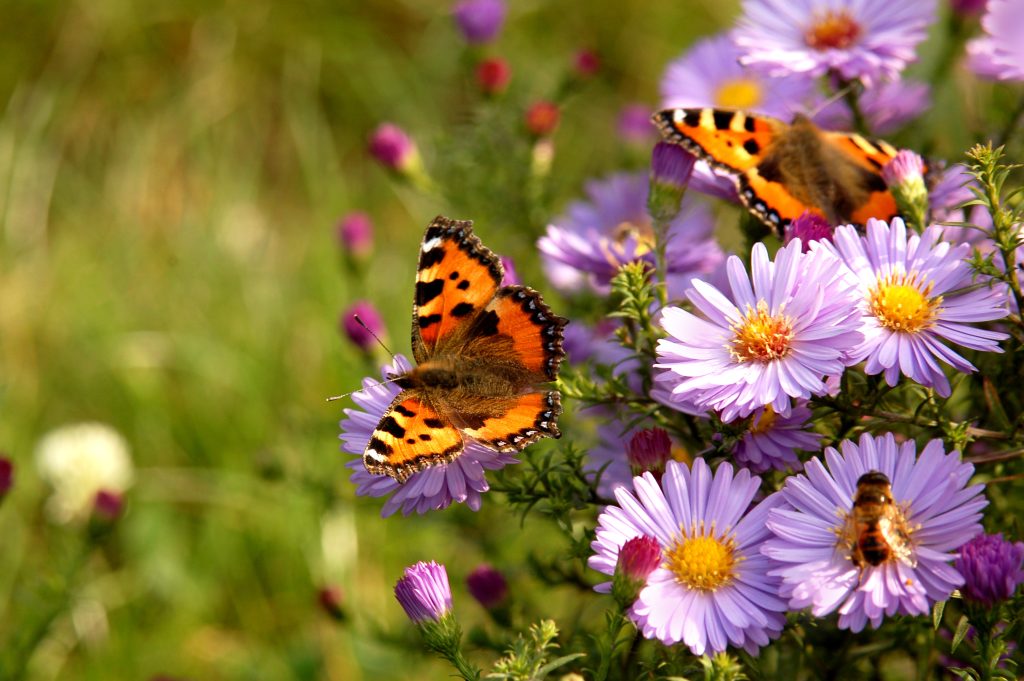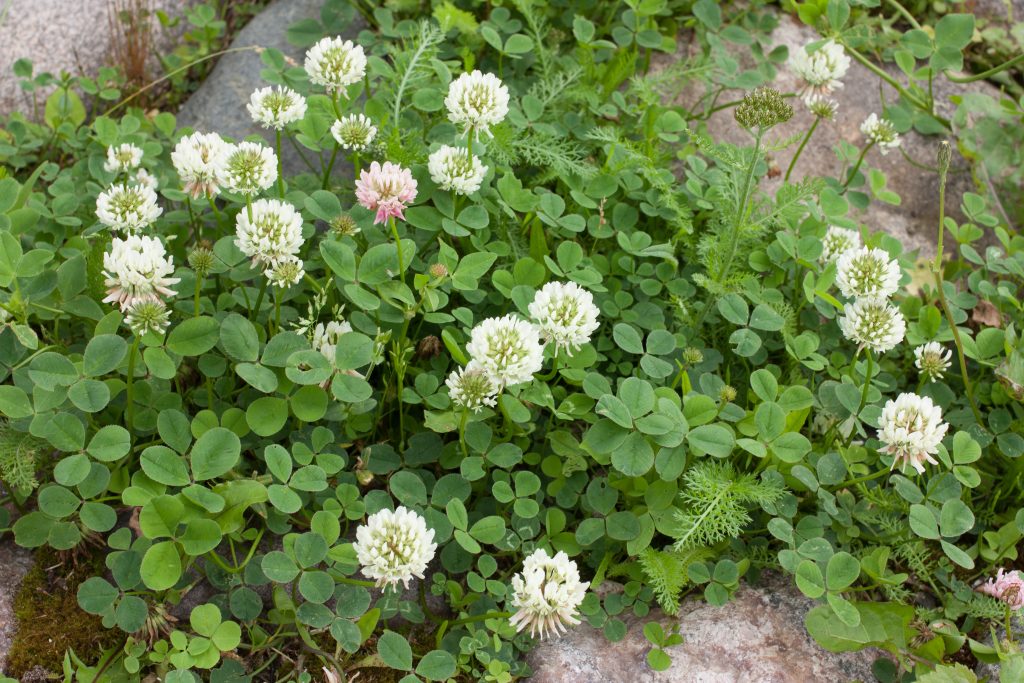Pollinator-Friendly Gardening – The Best Plants for Bees and Butterflies

Pollinators like bees and butterflies play a crucial role in maintaining biodiversity and supporting healthy ecosystems. These species help pollinate a wide range of flowering plants, including those in our UK gardens, as well as essential crops like fruits and vegetables. Without them, a third of the world’s food production would be severely impacted.
By focusing on plants for bees and butterflies, you can create thriving gardens that provide much-needed nectar and pollen for these vital pollinators.
Why Your Garden Needs Pollinator-Friendly Plants

Pollinator populations, including bees, butterflies, and moths, have been declining at an alarming rate due to habitat loss, widespread pesticide use, and the effects of climate change. These essential species are vital for pollinating many plants, but without access to diverse habitats and year-round sources of nectar and pollen, their numbers continue to fall.
By incorporating a variety of plants for pollinators, we create essential feeding grounds that provide the nectar and pollen they rely on throughout the year. A garden rich in different plant species of plants brings colour, life, and diversity to your garden, while also supporting local ecosystems.
The 8 Best Plants for Bees and Butterflies

When planning a garden that attracts both bees and butterflies, selecting the right plants is essential. A mix of UK native plants, herbaceous perennials, and a variety of flowering plants will create a vibrant, pollinator-friendly space that offers year-round benefits for these vital species. Here are seven of the top plants for bees and butterflies to include in your garden:
1. Verbena bonariensis

This tall, elegant plant is a favourite among butterflies and adds a beautiful structure to the garden. Its delicate purple flowers bloom throughout summer and into autumn, offering a long-flowering source of nectar.
Verbena bonariensis is easy to grow and thrives in well-drained soil, making it a must-have for pollinator-friendly gardens.
2. Bee Balm (Monarda)

Bee Balm is a perennial herb that attracts both bees and butterflies with its vibrant, nectar-rich flowers. This plant thrives in drained soil and offers a striking display of blooms in shades of red, pink, and purple. It also has a wonderful fragrance, making it an appealing addition to any garden.
3. Lavender (Lavandula)

Known for its strong fragrance and calming properties, Lavender is a perennial that is attractive to bees and butterflies. Its long-lasting flowers provide a reliable source of nectar, and it’s a low-maintenance plant that thrives in sunny, well-drained spots.
Bees absolutely love it, making it perfect for creating a buzzing atmosphere in your garden.
4. Butterfly Bush (Buddleia)

Buddleia, also known as the Butterfly Bush, is famous for its ability to attract butterflies with its large, fragrant blooms. These nectar-rich flowers are a magnet for pollinators, and the plant itself is hardy and easy to grow.
With its impressive blooms, it’s an iconic choice for those looking to support butterflies in the UK.
5. Salvia

Salvia is another great plant for both bees and butterflies. With its vibrant spikes of blue, purple, or red flowers, it blooms continuously throughout the summer, offering a reliable source of nectar. It’s also easy to grow and works well in most garden settings.
6. Marjoram (Oregano)

This perennial herb is not only a kitchen staple but also a fantastic pollinator plant. Marjoram blooms well into late summer and is a favourite for bees and butterflies alike. Its long-flowering nature makes it an excellent addition to any pollinator garden.
7. Honeysuckle (Lonicera)

Honeysuckle is perfect for attracting bees and moths, with its fragrant, tubular flowers that bloom throughout the summer. It provides a rich nectar source, and its climbing nature makes it ideal for covering walls, fences, or trellises, adding both beauty and function to your garden.
8. Clover (Trifolium)

Often overlooked, Clover is a low-growing plant that bees absolutely love. It’s easy to grow and works well in both lawns and borders, providing a simple yet effective way to support pollinators in your garden.
Bee- and Butterfly-Friendly Plants for Specific Garden Types

Whether you’re growing vegetables, working with a shaded area, or using containers, there are great plant options to support bees and butterflies.
For Vegetable Gardens
Pollinator-friendly plants can significantly boost vegetable garden yields by attracting bees to pollinate crops like tomatoes, cucumbers, and squash.
Adding plants like Marigolds and Sunflowers to your vegetable patch can draw in pollinators, providing them with a rich source of nectar while enhancing your harvest. Marigolds are easy to grow and can help deter pests, while Sunflowers offer height and vibrant blooms that bees love.
For Shade
Gardening in shaded areas doesn’t mean you can’t attract pollinators. Shade-tolerant plants like Foxglove and Lungwort are excellent for these conditions. Foxgloves produce tall spikes of tubular flowers that are perfect for bees, while Lungwort blooms early in the year, providing much-needed nectar for emerging pollinators. Both thrive in dappled shade and bring beauty to more secluded parts of the garden.
For Containers
If space is limited or you prefer the flexibility of pots, there are plenty of easy-to-grow container plants that can support pollinators. Lavender and Sedum are both ideal for pots and planters and can be moved around the garden, guided by sun exposure.
Lavender, with its long-lasting fragrant blooms, attracts bees, while Sedum provides late-season nectar when other plants have finished flowering.
Creating the Perfect Habitat for Bees and Butterflies

Start by planting a wide range of pollinator-friendly species that bloom at different times of the year. This ensures a continuous supply of nectar and pollen from early spring through late autumn, keeping your garden buzzing with life year-round.
- Avoid using pesticides, which can harm not only pests but also the pollinators you’re trying to attract. Instead, opt for natural pest control methods or choose hardy, pest-resistant friendly plants.
- Incorporating native plants is another excellent way to attract local pollinators. These species have evolved alongside local wildlife and are perfectly suited to support bees and butterflies in your region.
- Finally, consider adding a small water source, like a shallow dish with pebbles, to provide a safe place for pollinators to drink and cool off.
Support Our UK Bees and Butterflies

Planting pollinator-friendly species is one of the easiest and most impactful ways to support bees, butterflies, and other essential pollinators. Whether you have a large plot or just a few containers, every plant counts in helping to sustain these vital creatures.
Get a Quote
Looking for advice or have a question? Fill out our quick form below and we'll put you in touch with the right person in our team! We'll get back to you by the end of the next working day.


